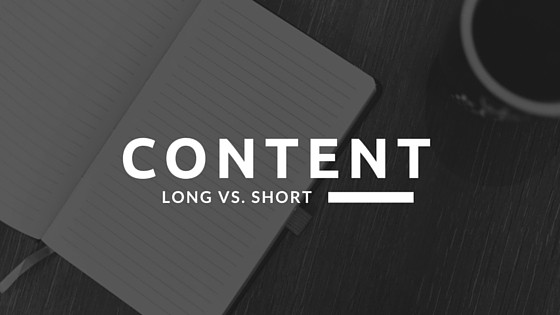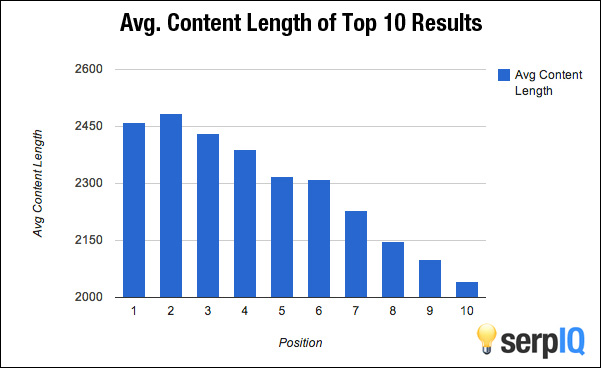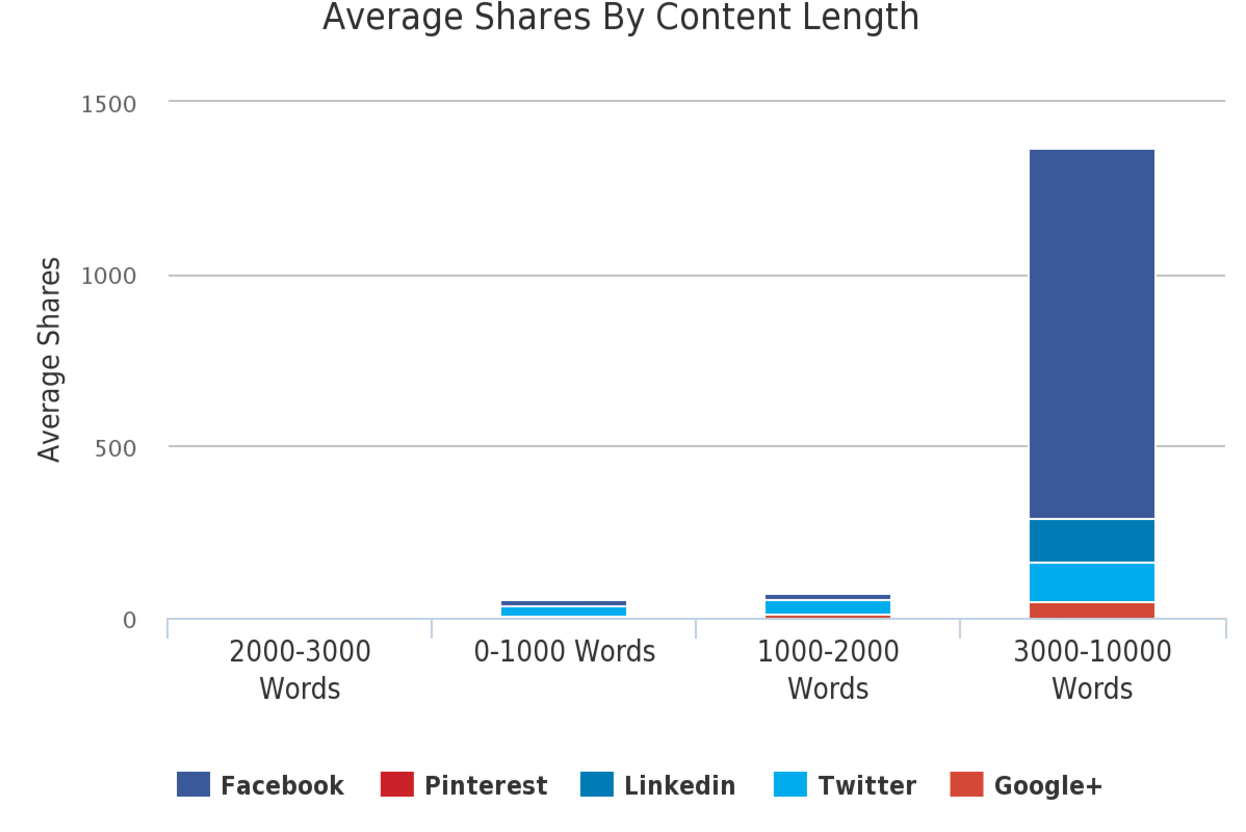You know this never-ending debate? “Long-Form Content vs. Short-Form Content”, It’s forever hot. Guess you have once thought and asked yourself, “What is a good Blog Post Length?”.
Content writing is more than just punching your keyboard or putting words together. There’s a lot of ‘behind the scene’ activities your readers knew nothing about.
One of the biggest deal is to come up with an ideal content length. One size does not fit it all, every man for himself. If you are always caught up in this debate, I will like to ease your stress by providing you valuable insights.
Long-Form Content vs. Short-Form Content – What research is saying?
Many experts have conducted their research, they studied search engines and search results to extract data that would be handy to determine which is better between Long-Form Content and Short-Form Content.
You are not expecting their end results to be the same; however, it should follow the same pattern.
Research by serpIQ analyzes the correlation between Word count and first-page result, it concludes that 2,450 words is a sweet count.
Another research, this time by backlinko, confirms that the average word count of a Google first page result was 1,890 words.
Even MOZ was not left out, their research affirms that 3,000 – 10,000-word Content gets the most shares.
Noticed the patterns?
Long-Form Content performs better on search results.
But is it always so? Must you be writing only long-form Content? Are short-form contents obsolete? What about people like Seth Godin that write less than 200 words and get thousands of shares? That’s because he is Seth Godin – You are not.
Don’t get confused already.
Does Content Length Matter?
Yes, it does. Content is king, right? Content length is among the king-makers. It depends on what type of content you are writing; there’s is no universally accepted content length.
Most times, it always natural. Like writing an ultimate guide, you just discovered you have poured in thousands of words, even without setting a word count.
On the other hand, a query like “How old is Donald Trump” shouldn’t cost you up to 200 words, you don’t want to waste time writing what no one will read.
Quality is Still Better Than Quantity (Even if it’s short!)
This is the crucial point, Quality beats Quantity in all situations. Due to the emphasis laid on “Long-form post”, Some Content creators now rank quantity above quality.
The above example still stands, the term “How old is Donald trump” does not fit for long content. Even if you write an astonishing 4000 words, no one cares. Google will reward your content with a zero-click result.
To do you a solid: If you can adequately answer a search query in 2000 words, then, it’s unprofessional to stretch it to 4000 words. You don’t want to hurt your site user experience. You must (All day – All time) put Quality above quantity.
Before showing how to come up with a blog post length, I love to first tell you why you should be writing both (short and Long Content).
Why You Should be Publishing Long-Form Content
Let’s see a few reasons why you should start publishing Long-for Content.
1. More Brand Authority
Writing a masterpiece that touches every corner of a search term marks your brand a thought leader in the industry. More extended contents are naturally assumed to be detailed and attract valuable readers.
If you want your brand website to become the go-to resource for reading problem-solving articles, you must ensure your piece are long and valuable.
Example: If I search for some terms on google, I naturally first scroll to the end of the article just to examine its length. I have this strong belief that no one will write a long piece full of trash. My opinion tallies with other searchers believe too.
2. More Social Media Shares
The graph I cited above indicates that long-form content (3000- 10000 words) attracts a lot of natural social shares. Unsurprisingly, people love to share an article that helps them solve their problems and increase their knowledge.
Unless you are giving a never seen information, it’s unusual to attract a lot of shares with shorter content. If a person reads a content in less than 3 minutes, they will likely hit the back button to read another content – without sharing the previous one.
3. Reduce Bounce Rate & Increase Dwell Time
Both bounce rate and dwell time are ranking factors, both are opposite of each other.
Bounce rate means when a user clicks your result just to hit the back button after a few seconds or minutes. It’s a big NO, google will react (badly) if such actions persist.
Dwell time is the amount of time a user spent on your site after clicking your result. The longer, the better. It’s an indication that you are providing valuable content.
It’s a no-brainer, Short-form Content increase bounce rate. If a user finishes reading your Content in 3 minutes, then rush back to consume your competitors’ content spending 10 minutes, it’s a message to Google that your Content only solves part of the query – that your competitor is better.
4. Attract Organic Backlinks
It’s no news; backlink is a strong ranking factor. You are just hearing this for the first time? Seriously?
Strong backlinks help to Increase Domain Authority. Although there are different ways of getting backlinks, earning it organically is the best. What it means to get organic backlinks is that your Content must be a masterpiece with so many goodies.
To simply put, it must be long-form content. The kind of contents that attract natural backlinks are:
- Research
- New Updates
- Case Studies
- How To Post
Have you ever seen a case study of 300 words? Or, A Data Research of 500 words? These types of Content are meant to be in long-form and attract backlinks because they are mostly evergreen.
Why you should be Publishing Short-Form Content
1. Short Attention Span
You must consider the fact your readers are a human being, they have other things attend to – so they can’t wait several minutes to consume a content except it’s of utmost importance.
The reason why most readers are skimmers is that they don’t have time; they dedicate time for every activity – even for reading blog posts.
2. Some Readers prefer bite-sized Content
Some readers have enough time at their disposal, they are less busy. Yet, prefer bite-size Content that can easily be read and digest in a short while.
If you want to keep those kinds of readers, Short-form Content is your best choice, else, they whisk away. Some readers are poor at digesting longer Content, they get lost easily if a post is too long (and boring).
It also helps you to increase your blogging productivity; You won’t be stressed out writing a long post that takes your whole day.
3. To Keep Up Post Frequency
As a content creator, you want to maintain your posting frequency. If you post daily, it will be almost impossible to keep up with long-form Content; shorter Content will be more comfortable.
Except writing is your strong point, publishing 2000 words daily won’t be any easy. If your blogging niche requires that you post every day, you are left with no choice than to settle for short-form Content that contains Power words.
2 Keypoint To Help You Decide A Good Blog Post Length
You have seen why the debate of long-form Content vs. Short-form Content is never-ending. Both content type works perfectly. But, How do you decide the perfect blog post length? Use these key points:
Who are your Audiences?
It’s vital to know who you are writing for, it will help you prepare a content that fits their need. There are many stages to learning – From Beginner to intermediate to expert.
If your target audiences are those that lack basic knowledge (beginners), they need content that will walk them through things from scratch, A masterpiece that could be called an ultimate guide.
Example:
The search query “What is affiliate Marketing” requires deep touch, the user is at the beginner stage and will be expecting a mega guide (at least 2000 words) that will break every part down.
What is The Search Intent?
Search intent refers to the intent behind a user search, why a user searches for a term, and what type of results they expect. Search intent can help to identify the ideal blog post length.
A search with a commercial intent requires not many words; the user is ready to make the purchase and probably needs a link to complete the purchase.
A user searching for “buy sony camera” is convinced and needs no further persuasion. Such a user wants to pay and get the camera without reading any content.
And, A user searching for “sony camera review” needs a piece to convince him/her why the camera is worth their money. So, through evaluating search intent, you can get the perfect blog post length.
Conclusion: Long-Form Content vs. Short-Form Content?
Knowing a good blog Post Length is vital before hitting publish. Whether short-form content or Long-Form content, the goal is to provide valuable resources that solve users’ problems.
What’s your take on this? Do you write Short or Long Content?




Comments are closed.